
NTNUI Quidditch is this year's champion
After a rough finale against OSI Quidditch, NTNUI Quidditch won this year’s Norwegian Quidditch Championship.
OBS! Denne artikkelen er mer enn tre år gammel, og kan inneholde utdatert informasjon.
A large group of people are gathered at the Rustad Artifical Turf field to witness the finale match of the Norwegian Quidditch Championship 2016 this weekend. They are students from high school, universities and colleges from all over Norway. Some are eager Harry Potter fans. Others are here just for the spirit of competition.
All in all, 12 teams have been competing in the championship, twice as many as the first ever tournament in 2013.
Both of this year’s two favorite teams, NTNUI Quidditch and previous champion OSI Quidditch, qualified for the finale, where NTNUI managed to gain a heavy lead, and carry the team to victory 150 points to 50.
It was Katta Quidditch and Westtown Quidditch who qualified for the bronze finale, where Westtown won 80 points to 20.
The championship took place on the 12th and 13th of March.
What has kept me coming back is not the Harry Potter part of the game, but the people.
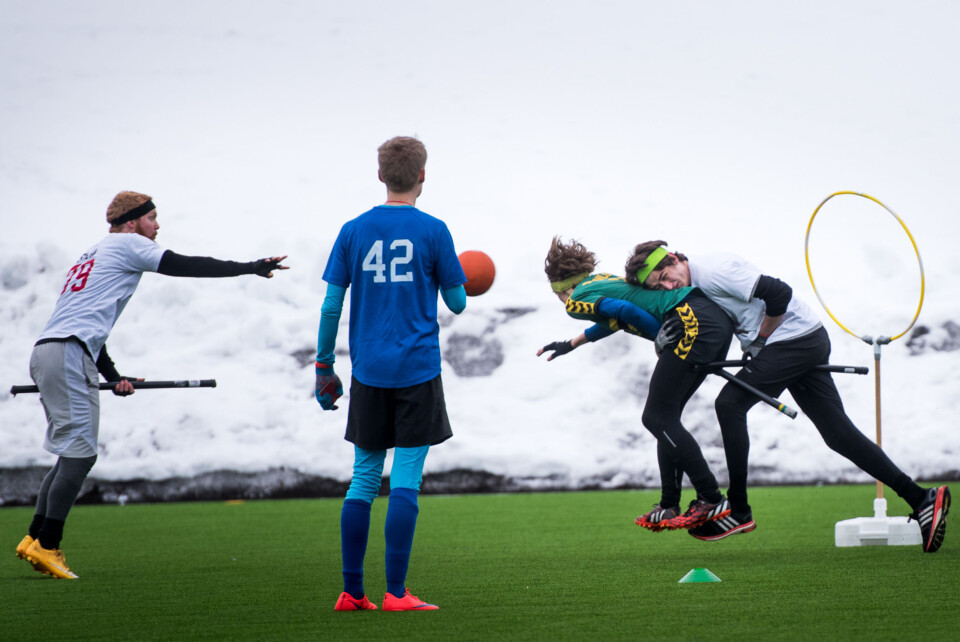
A showdown of rivalry
Both NTNUI Quidditch and OSI Quidditch were considered favorites during the championship, and the finale match epitomized the rivalry between the two teams.
NTNUI was the first organized Norwegian quidditch team, from 2012. Since then, the concept of real life quidditch spread all over the country, and several more teams are now well established. NTNUI, with its experienced player base and long history, has had a lot of advantages in this year’s tournament.
But so has OSI Quidditch as well. They won the previous championship, in a finale against St. Olav High School, and they made their way to the finale this year as well. Since last year they have lost some of their good players, but they still have some giants who are towering over most of the NTNUI players.
And size is a real advantage, because the real life version of quidditch is a very physical, rough sport, compared to the book version. In the books, players usually fall to the ground because the bludgers are knocking them of the brooms.
At Rustad Artifical Turf Field, players fall to the ground because other players tackle them.
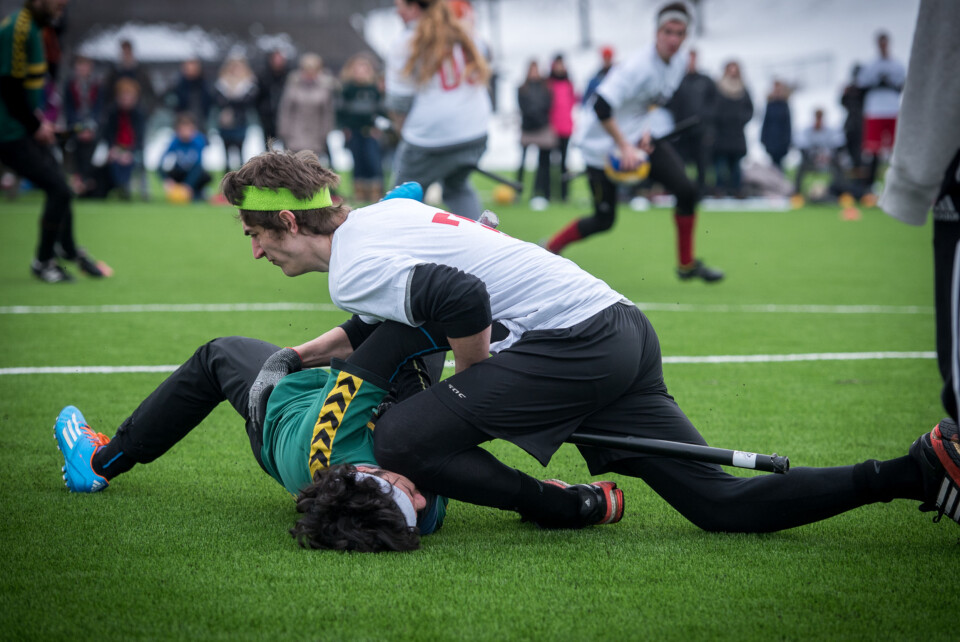
Making reality of magic
Real life quidditch, with its origin from the wizardly sport from the Harry Potter novels, is quite different from its written counterpart. There is a lot of information to comprehend as the players wrestle in a sport that is similar to both handball, rugby and dodgeball.
When a match in the sport of quidditch is about to start, the competing teams gathers at their sides of the field, surrounding their goals. Then, the quaffle right in the middle of them.
And this was also the case at the finale match at Rustad this Sunday afternoon.

Ready, set, go
The temperature is shifting between 4 and 5 degrees. However, both NTNUI and OSI Quidditch seem to be sweating, even though they are all dressed in thin long sleeves, or even just t-shirts.
As the finale match of the Norwegian Quidditch Championship is about to begin, both teams gather around their goals, and position themselves - ready to run towards the quaffle, the volleyball now placed in the middle of the field.
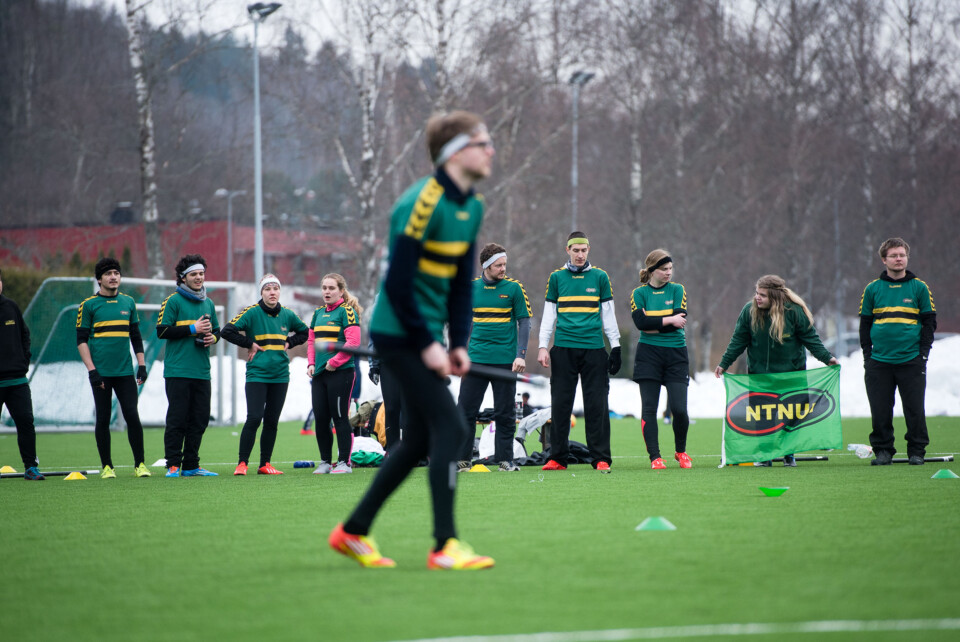
A whistle is blown, and everything is all of a sudden happening really fast. Both teams collide with each other as one of the chasers from NTNUI pick up the quaffle. They are running fast, making quick turns, dodging bludgers and trying as best as they can to keep their brooms, which is basically just plastic pipes, between their legs.
Les også: UiO vant NM i rumpeldunk
NTNUI quickly makes for OSI’s goals, they toss the quaffle, and a whistle is heard.
10 points to NTNUI, after about 20 seconds.
The match is on. The clash of the two titans of the Norwegian world of Quidditch has begun.
The victory
There is a lot to pay attention to. The field the match is played on is relatively small, considering the amount of players that are running around. But the real issue is the amount of balls that are in play, especially the bludgers.
There are three of them, and they are being tossed constantly. Each time a player is hit, they have to walk back to their goal before they can resume to play. And this really clutters up of the game. An attack can be prevented, tackles can be countered and defenses can break all by the good toss of the bludge. Whoever holds the control of them, holds a lot of power.
OSI are able to pick up the quaffle, and one of the chasers makes for a fast counterplay to NTNUI’s first score. He sprints down the field, past several opposing chasers and beaters, and tosses the ball through the goals.
10 - 10, the score board says.
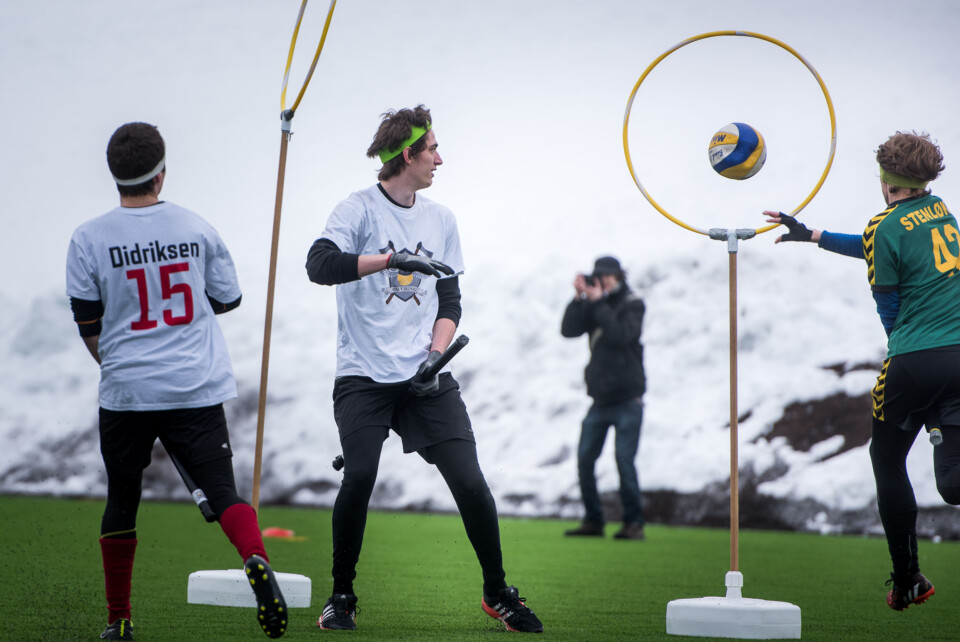
However, NTNUI is able to gain a lead after this. They score another 40 points before OSI can manage another 10. 50 - 20. Then 50 - 30, 60 - 30, and still going 70, 80, 90 and 100, all to OSI’s 30 points.
100 to 30.
The snitch is released after 17 minutes, one minute before the seekers. The snitch in this game is a neutral player dressed in yellow with a tennisball as a tail, and whoever catches the tail ends the game, and earns his or her team 30 points. But if OSI catches the snitch at this point, they still lose, because of NTNUI massive lead.
So the plan is simple: OSI has to stop NTNUI from getting the snitch, while trying to score enough points to make it even.
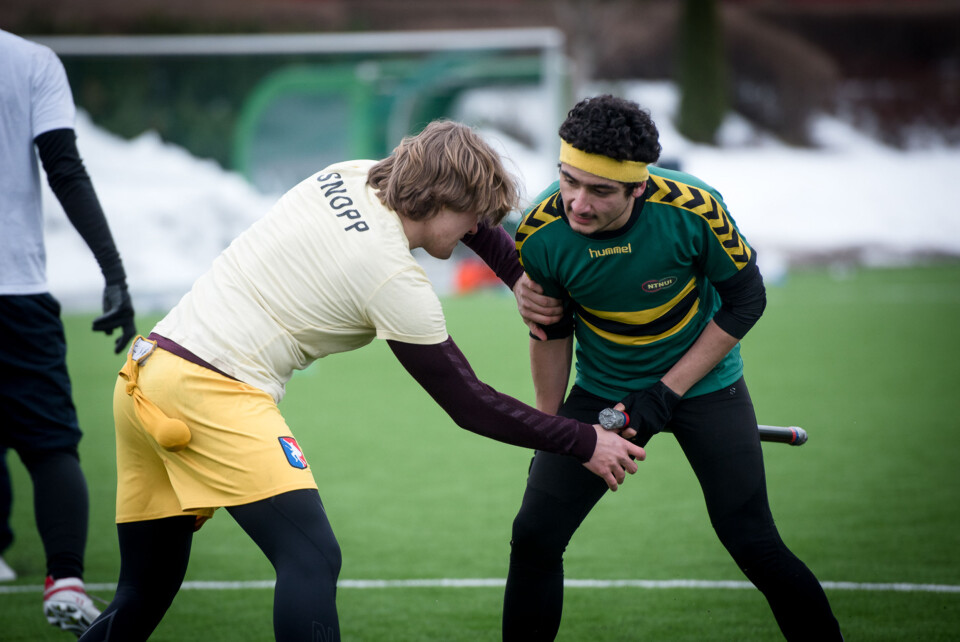
As the seekers are being released, OSI is doing their best too keep the seeker of NTNUI away from the snitch. And it is working, in a way.
Five minutes later the score board says 110 to 50. OSI is coming back, but ever so slowly.
But it is too late. Just a short time after, the NTNUI seeker dives forwards, and grabs the snitch. He waves it above his head, and a whistle is heard. For a moment everyone is quiet, before the judge raises his hand, and the NTNUI players start cheering.
They won. Once again they are the champions of Norway. At least in the world of quidditch.
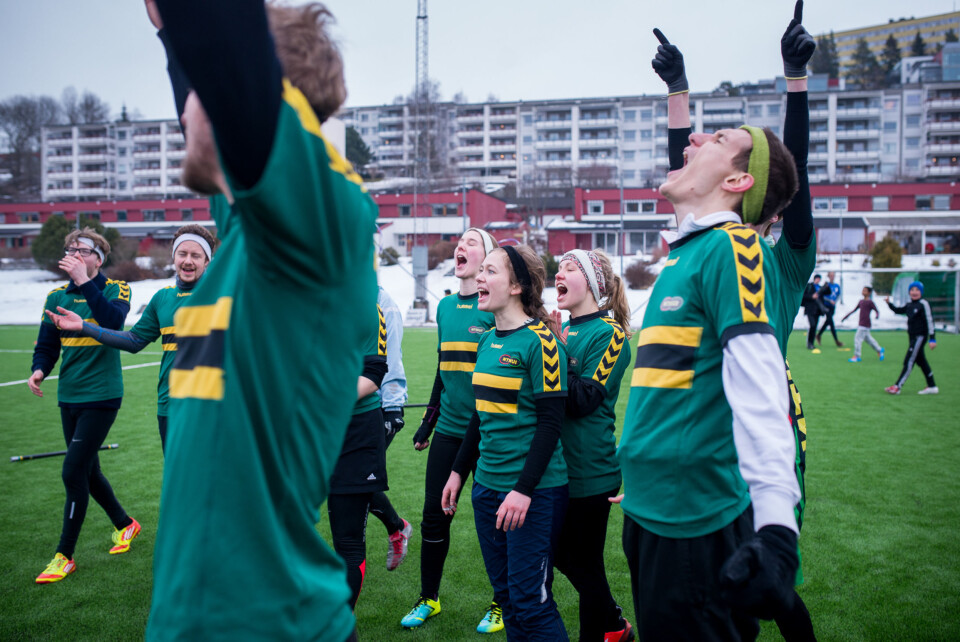
The aftermath
Maja Ørsleie, one of the chasers for NTNUI, is the only player at the team who has experienced all the four Norwegian championships. As part of Norway’s longest living quidditch team, she is happy to reclaim her title as champion.
— It was a very tough match, Ørsleie says as she leaves the field with her teammates.
She is short of breath, but smiling.
— The competition was really solid this year, she says.
Although they had a solid lead, Ørsleie says the match felt very even.
— It never felt like we had that much of a lead, because the other team played really well. Now I am just very happy, and it feels really good to be the winner again.
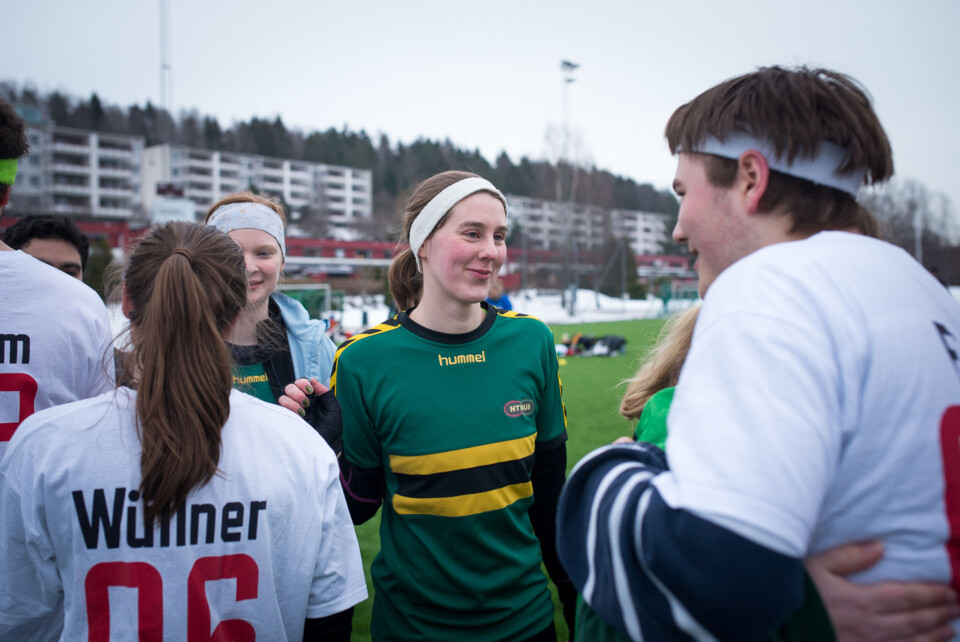
The popularity around quidditch seems to be increasing, and Ørsleie explains that she can see a clear evolution of the sport.
— I feel like this year’s event is more organized than previous years, she says, and adds:
— When we first started organizing the tournaments, the players weren’t fully aware of all the rules, so the matches were a bit quirky. Now the teams are much better, they have more strategies and play better around all the balls involved, so the matches are a lot more exciting.
When it comes to her own participation, Ørsleie explains that it was her love for the Harry Potter universe that sucked her in.
— I first started because I am a Harry Potter fan, and I saw a poster for quidditch tryouts at the Norwegian University of Science and Technology back in 2012. But what has kept me coming back is not the Harry Potter part of the game, but the people, she says.
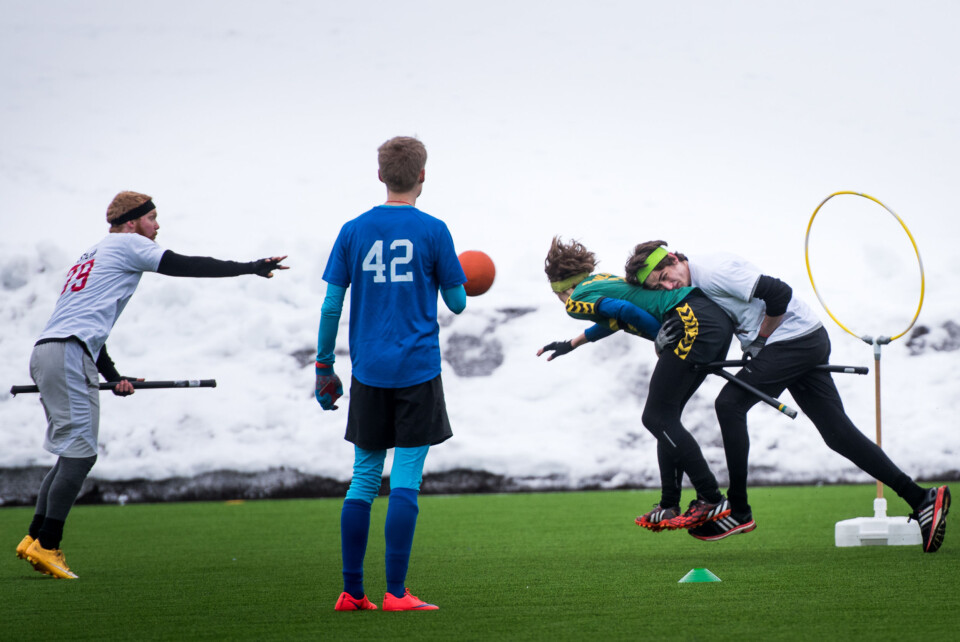

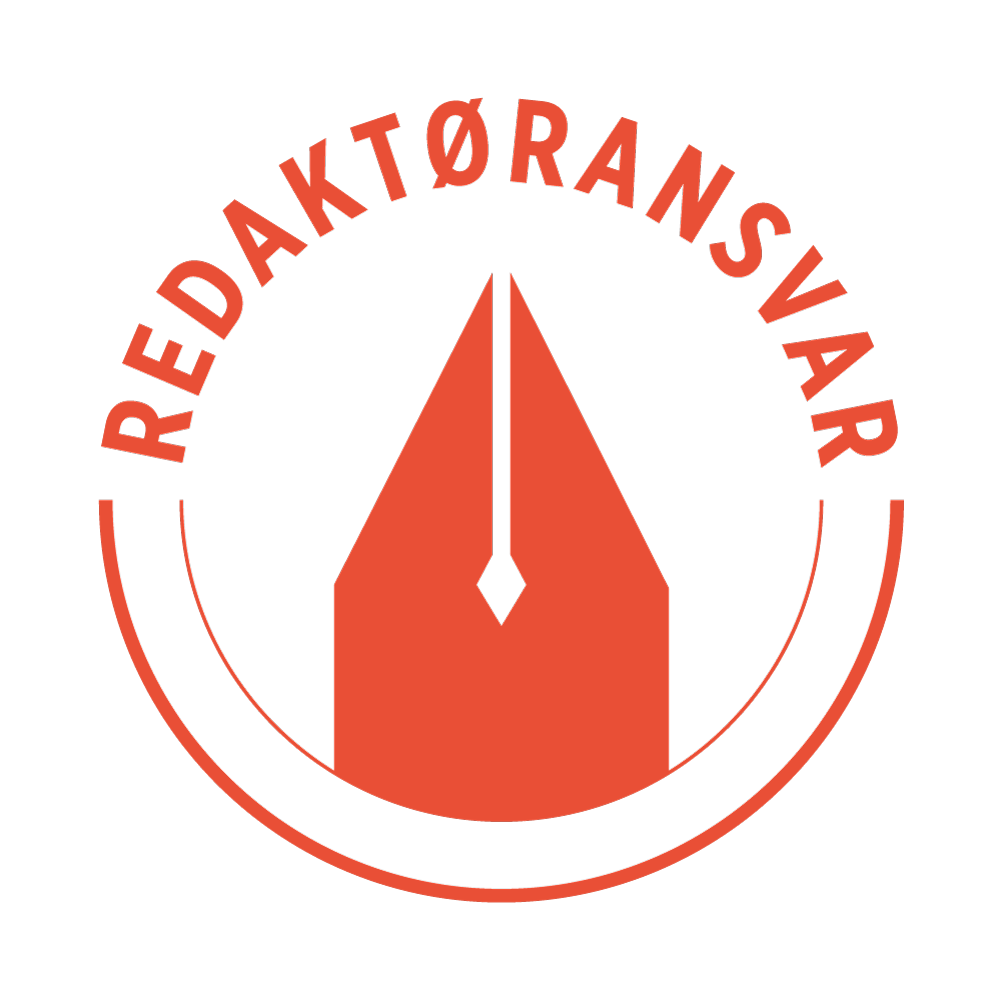





Logg inn med en Google-konto, eller ved å opprette en Commento-konto gjennom å trykke på Login under. (Det kan være behov for å oppdatere siden når man logger inn første gang)
Vi modererer debatten i etterkant og alle innlegg må signeres med fullt navn. Se Khronos debattregler her. God debatt!